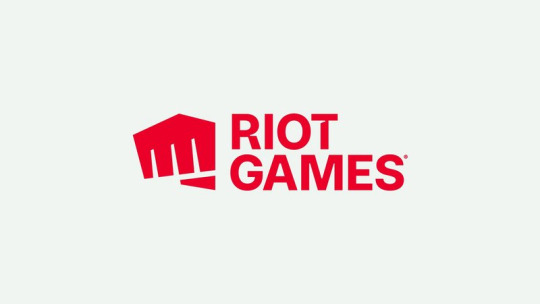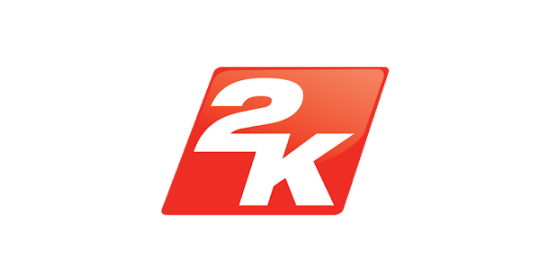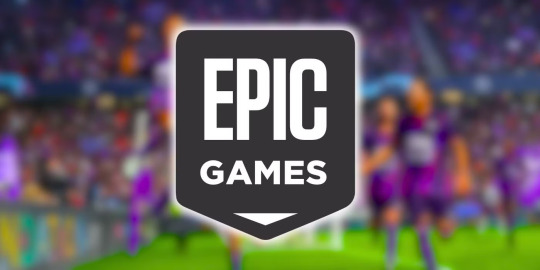#UI/UX design tools and software
Explore tagged Tumblr posts
Text
UI/UX Design for Mobile Apps: Best Practices, Tools, and Trends
In today’s digital landscape, mobile apps have become an integral part of everyday life. Whether for shopping, social networking, or productivity, users expect seamless experiences that are visually appealing and easy to navigate. This is where UI/UX design for mobile apps plays a crucial role.
A well-designed mobile app not only enhances user satisfaction but also drives engagement, retention, and conversions. To achieve this, designers rely on a range of UI/UX design tools and software to create intuitive and high-performing interfaces. This article explores the best practices for mobile app UI/UX design, must-have tools, and emerging trends in 2025.
1. The Importance of UI/UX Design for Mobile Apps
Mobile apps compete for user attention in a crowded marketplace. A visually appealing app is not enough — it must provide a seamless and intuitive experience. UI (User Interface) design focuses on aesthetics, including layouts, colors, typography, and icons. UX (User Experience) design, on the other hand, ensures that users can easily navigate and interact with the app.
Why UI/UX Matters for Mobile Apps?
User Retention: A poor UI/UX experience leads to high bounce rates, whereas a well-optimized design keeps users engaged.
Higher Conversions: Intuitive navigation and smooth interactions increase sign-ups, purchases, and engagement.
Brand Credibility: A well-designed app builds trust and strengthens a brand’s reputation.
Competitive Advantage: A seamless mobile experience helps businesses stand out in a saturated market.
To achieve these benefits, designers use various principles and best practices, which we will explore next.
2. Best Practices for UI/UX Design in Mobile Apps
a) Prioritize Simplicity and Minimalism
Mobile screens are small, so cluttering them with excessive elements makes navigation difficult. The best mobile designs follow a minimalistic approach, emphasizing clarity, whitespace, and intuitive layouts.
Best Practices:
Use simple and familiar icons to guide users.
Limit the number of steps required to complete an action.
Keep text concise and easy to read.
b) Ensure Seamless Navigation
Users should be able to navigate an app without confusion. A well-structured interface enhances usability and keeps users engaged.
Best Practices:
Implement a bottom navigation bar for easy access to key sections.
Use a consistent design pattern throughout the app.
Provide clear call-to-action (CTA) buttons for user interactions.
c) Optimize for Touch and Gestures
Mobile apps should be designed for touch interactions, considering factors like thumb reach and gesture-based controls.
Best Practices:
Place important buttons within the thumb-friendly zone.
Use gestures like swipe and pinch to enhance interactivity.
Ensure button sizes are large enough for easy tapping.
d) Focus on Performance and Speed
A slow or laggy app leads to user frustration. UI/UX design should prioritize performance optimization to ensure smooth functionality.
Best Practices:
Compress images and assets to reduce loading time.
Implement caching and lazy loading for content-heavy apps.
Minimize animation complexity to improve responsiveness.
e) Implement Dark Mode Compatibility
Dark mode has become a user preference for many apps. It not only reduces eye strain but also conserves battery life.
Best Practices:
Provide a toggle option between light and dark modes.
Use appropriate contrast levels for readability.
Ensure brand consistency across both themes.
f) Test and Iterate Based on User Feedback
Continuous testing is essential to refine UI/UX design. Conduct usability testing and collect user feedback to improve app interactions.
Best Practices:
Use A/B testing to compare different UI versions.
Analyze heatmaps to understand user behavior.
Address usability pain points before launching updates.
3. Essential UI/UX Design Tools and Software
Designers rely on various UI/UX design tools and software to create prototypes, wireframes, and interactive experiences. Here are the top tools used in 2025:
a) Prototyping and Wireframing Tools
Figma — Cloud-based collaborative design tool for real-time team collaboration.
Adobe XD — Feature-rich tool for creating interactive prototypes and UI designs.
Sketch — Popular for macOS users, ideal for vector-based UI design.
Balsamiq — Best for low-fidelity wireframing with a focus on simplicity.
b) UI Design and Illustration Tools
Canva — Great for creating quick UI components and social media assets.
Affinity Designer — Alternative to Adobe Illustrator for detailed UI illustrations.
LottieFiles — Used for adding lightweight, animated illustrations.
c) User Testing and Analytics Tools
Maze — Conduct usability tests and collect real-time user feedback.
Hotjar — Provides heatmaps and session recordings to analyze user interactions.
UserTesting — Enables live user feedback to refine UI/UX design.
Using these tools ensures that designers create well-structured, user-friendly, and visually appealing mobile applications.
4. Future Trends in UI/UX Design for Mobile Apps
As mobile technology advances, UI/UX design is evolving to meet new user expectations. Here are some key trends shaping mobile app design in 2025:
a) AI-Powered Personalization
AI-driven UI design will enable apps to adapt interfaces based on user preferences and behavior, offering a more personalized experience.
b) Voice and Gesture-Based UI
With the rise of voice assistants and gesture controls, mobile apps will increasingly incorporate hands-free navigation.
c) Augmented Reality (AR) Integration
Apps in industries like e-commerce, real estate, and education will leverage AR to enhance user interactions and provide immersive experiences.
d) Micro-Interactions for Better Engagement
Subtle animations and feedback mechanisms, such as button hovers or loading effects, will enhance user engagement and usability.
e) 3D UI and Neumorphism
Modern UI trends, including 3D elements and neumorphism (soft UI design), will add depth and realism to mobile app interfaces.
By staying updated with these trends, designers can create next-generation mobile applications that cater to evolving user needs.
Thus, UI/UX design for mobile apps is a critical factor in ensuring app success. A well-designed mobile interface improves usability, boosts engagement, and enhances brand credibility. By following best practices, leveraging top UI/UX design tools and software, and staying ahead of emerging trends, designers can craft seamless and engaging mobile experiences.
As mobile app expectations continue to rise, businesses must prioritize UI/UX to remain competitive in a user-driven digital landscape. Whether you are a startup or an enterprise, investing in UI/UX design will lead to a more successful and user-friendly mobile application.
0 notes
Text
Creating Interactive Prototypes Without Coding
Introduction Let’s be real—coding isn’t for everyone. But that doesn’t mean you can’t bring your ideas to life. Whether you’re a designer, entrepreneur, marketer, or just someone with a bright idea, creating interactive prototypes without writing a single line of code is not only possible, it’s also incredibly easy in 2025. No more waiting around for a developer to “find time.” No more static…
#best prototyping software 2025#create app mockups without coding#interactive prototype tools#no-code prototyping#UX UI no-code design
0 notes
Text

Do you need a website?
just CLICK HERE and build your own website by your choice.
https://go.fiverr.com/visit/?bta=1026601&brand=fiverrmarketplace&landingPage=https%253A%252F%252Fwww.fiverr.com%252Fs%252FKe716Q4
#Website Design#Web Development#Responsive Web Design#UI/UX Design#Web Design Trends#Custom Web Design#Web Development Services#Front-End Development#Back-End Development#Full-Stack Development#WordPress Design#E-commerce Web Design#Website Redesign#Mobile Web Design#Web Design Inspiration#Website Optimization#SEO Web Design#Web Design Best Practices#Website User Experience#Web Design Principles#Graphic Design for Websites#Website Development Tools#Content Management Systems#Website Speed Optimization#HTML/CSS Design#JavaScript Development#Website Accessibility#Interactive Web Design#Website Prototyping#Web Design Software
0 notes
Text
#device#simulator#tester#real#time#experience#ui#ux#design#web#software#graphic#tool#vercel#test#sites#tab
0 notes
Text
0 notes
Text
Top 10 Website Design Tools
In the rapidly evolving landscape of digital design, staying ahead of the curve is essential for creating stunning websites. As we step into 2024, the world of website design has seen a surge in innovative tools that streamline the creation process and elevate the overall user experience. Here, we present the top 10 website design tools that are revolutionizing the industry in 2024. Top 10…

View On WordPress
#best web design software#collaborative design platforms#creative web design tools#digital design software#graphic design software#online web design tools#responsive web design tools#top design software for websites#ui/ux design tools#user interface design tools#web design resources#web design tools and software#website design tools 2024#website development tools#website prototyping tools
1 note
·
View note
Text
Summer 2025 Game Development Student Internship Roundup, Part 1
Internship recruiting season has begun for some large game publishers and developers. This means that a number of internship opportunities for summer 2025 have been posted and will be collecting applicants. Internships are a great way to earn some experience in a professional environment and to get mentorship from those of us in the trenches. If you're a student and you have an interest in game development as a career, you should absolutely look into these.
If you know of any game development internships that aren't listed here, please tell me! I'll try to collect another batch when EA posts theirs as a follow-up.

Technical Artist Intern (Remote!)
Sound Design Intern (Remote!)

Game Design Intern
Game Engineering Intern
Data Analytics & Data Science Intern
Localization Production Intern
Environment Art Intern
Animation Intern
VFX Intern
3D Character Art Intern
Site Reliability Engineering Intern

Concept Artist Intern (Canada)
Animation Intern
VFX Intern
Game Engineering Intern
Technical Artist Intern
Threat Intelligence Analyst Intern
UI/UX Design Intern
User Research Intern
Computer Graphics Intern
Software Engineering Intern
Production & Project Management Intern
Concept Artist Intern (California)

World Designer Intern

3D Artist Intern
Animation Programmer Intern
Animation Technical Design Intern
Audio Design Intern
Backend Engineer Intern
Balance Design Intern
Character Artist Intern
Engine Programmer Intern
Environment Art Intern
Game Design Intern
Game Security Intern
Gameplay Programmer Intern
Gameplay Systems Engineer Intern
Salesforce Developer Intern
Software Engineer Intern
Environment Art Intern
Game Design Intern
Gameplay Programmer Intern
Tools Programmer Intern
Technical Artist Intern
Technical Character Animation Intern
Technology App Portfolio Intern
Tools Programmer Intern

Concept Artist Intern
At time of writing, Electronic Arts was performing maintenance on their recruiting site and should have new openings posted on November 12th 2024. I'll do a second round of internship opportunities once they post, along with Ubisoft and any others I missed.
Brush up your resume and focus on any game dev work you've done. Amateur game dev work counts! Tabletop game mastering counts! Amateur board and card game design counts! Making your own CCG fan sets or draft cube counts! Game jam work counts! These make a bigger difference when it comes to hiring than most other kinds of work experience.
If you need assistance with your resume/CV, cover letter, or have other questions, join our discord and ask. The server is full of experienced developers who can help review your materials and give you suggestions. I also suggest taking a look at my Game Career FAQ. There's a lot of answers in there already. Best of luck out there.
[Join us on Discord] and/or [Support us on Patreon]
Got a burning question you want answered?
Short questions: Ask a Game Dev on Twitter
Long questions: Ask a Game Dev on Tumblr
Frequent Questions: The FAQ
28 notes
·
View notes
Text
Which tools every UIUX designer must master?
Gaining proficiency with the appropriate tools can greatly improve your workflow and design quality as a UI/UX designer. The following are some tools that any UI/UX designer has to know how to use:
1. Design Tools:
Figma: One of the most popular and versatile design tools today. It’s web-based, allowing real-time collaboration, and great for designing interfaces, creating prototypes, and sharing feedback.
Sketch: A vector-based design tool that's been the go-to for many UI designers. It's particularly useful for macOS users and has extensive plugins to extend its capabilities.
Adobe XD: Part of Adobe's Creative Cloud, this tool offers robust prototyping features along with design functionalities. It’s ideal for those already using other Adobe products like Photoshop or Illustrator.
2. Prototyping & Wireframing:
InVision: Great for creating interactive prototypes from static designs. It’s widely used for testing design ideas with stakeholders and users before development.
Balsamiq: A simple wireframing tool that helps you quickly sketch out low-fidelity designs. It’s great for initial brainstorming and wireframing ideas.
3. User Research & Testing:
UserTesting: A platform that allows you to get user feedback on your designs quickly by testing with real users.
Lookback: This tool enables live user testing and allows you to watch users interact with your designs, capturing their thoughts and reactions in real time.
Hotjar: Useful for heatmaps and recording user sessions to analyze how people interact with your live website or app.
4. Collaboration & Handoff Tools:
Zeplin: A tool that helps bridge the gap between design and development by providing detailed specs and assets to developers in an easy-to-follow format.
Abstract: A version control system for design files, Abstract is essential for teams working on large projects, helping manage and merge multiple design versions.
5. Illustration & Icon Design:
Adobe Illustrator: The industry standard for creating scalable vector illustrations and icons. If your design requires custom illustrations or complex vector work, mastering Illustrator is a must.
Affinity Designer: An alternative to Illustrator with many of the same capabilities, but with a one-time payment model instead of a subscription.
6. Typography & Color Tools:
FontBase: A robust font management tool that helps designers preview, organize, and activate fonts for their projects.
Coolors: A color scheme generator that helps designers create harmonious color palettes, which can be exported directly into your design software.
7. Project Management & Communication:
Trello: A simple project management tool that helps you organize your tasks, collaborate with team members, and track progress.
Slack: Essential for team communication, Slack integrates with many design tools and streamlines feedback, updates, and discussion.
8 notes
·
View notes
Text
VFX Era: Your Future Begins with Graphic Designing Course in Kanpur

VFX Era is redefining creative education in Uttar Pradesh through its comprehensive graphic designing course in Kanpur. Combining artistic training with career-readiness, this course equips learners with both the vision and the tools to become successful design professionals. Whether you're a recent school graduate or a mid-career switcher, VFX Era has built a design ecosystem that blends theory, practice, and professional mentorship.
What makes VFX Era unique is its complete learning cycle. From learning tools like Adobe Photoshop and Illustrator to understanding brand identity, visual storytelling, and user interface design, students are nurtured into becoming designers who solve real-world problems.
Why VFX Era's Graphic Designing Course in Kanpur Is the Ideal Starting Point
The growing demand for visual content across industries has created a need for trained graphic designers who are not just tool-users but thinkers and creators. VFX Era’s graphic designing course in Kanpur is designed to meet this demand with a practical, future-focused approach. Here, you don’t just learn how to use design software — you learn how to build brands, shape user experiences, and communicate visually.
From logos and brochures to social media content and website layouts, students work on real-time projects that mirror the needs of businesses today. This course doesn’t just prepare you to enter the industry—it prepares you to stand out in it.
The VFX Era Learning Philosophy: Creative, Practical, Professional
At the core of VFX Era’s teaching model is a blend of hands-on practice and conceptual clarity. The course aims to empower students with skills that are instantly applicable in the job market:
Understanding how design solves business problems
Translating ideas into visual campaigns
Creating cross-platform consistency for brand visuals
The course also introduces students to design systems and workflows that are used by professionals in advertising agencies, startups, eCommerce platforms, and global brands.
Course Structure: From Fundamentals to Industry-Level Mastery
Here’s a breakdown of what the curriculum covers:
Design Principles: Color theory, visual hierarchy, composition
Image Editing: Retouching and visual manipulation using Adobe Photoshop
Vector Graphics: Logo and icon creation using Illustrator and CorelDRAW
Typography: The art of readable and brand-oriented text design
Layout and Publishing: Flyers, posters, banners, and social media creatives
UI/UX Basics: Designing for websites and mobile apps
Brand Identity Projects: Packaging, logo kits, visual guidelines
In addition to these, students also receive special training in:
Freelancing and client handling
Building an online design portfolio
Content design for social media platforms
Basics of animation and motion graphics
Project-Based Learning at VFX Era
Every module is accompanied by a project. This means by the end of the course, each student has an impressive portfolio that includes:
Company logos
Product packaging
Event banners
Ad creatives
Website UI samples
Infographics and visual resumes
Students also receive reviews on their projects, just like in real agency settings. These critiques from mentors help learners understand what employers and clients expect.
Career Pathways After a Graphic Designing Course in Kanpur
The beauty of a graphic designing career is its versatility. After completing this course, you can work in:
Digital Marketing Agencies
Media and News Companies
Corporate Design Teams
Freelance Marketplaces
Startups and E-commerce Brands
You can also specialize in:
Branding Design
Social Media Content
Web Graphics
Packaging Design
Presentation & Pitch Deck Design
And if you want to scale further, combining your design skills with digital marketing or front-end development knowledge creates a competitive profile for roles like UI Designer or Digital Content Strategist.
The Role of Mentors in Your Creative Growth
Unlike self-paced online tutorials, the VFX Era experience is guided by mentors. These are industry professionals who:
Review your design drafts
Provide actionable feedback
Teach shortcuts and design hacks
Guide you on pricing, pitching, and professionalism
This mentorship accelerates learning, builds confidence, and prepares students for freelance gigs or full-time jobs.
The Power of Design in Kanpur’s Business Ecosystem
Kanpur is no longer just an industrial city. With the digital boom, local businesses are investing in branding, social presence, and customer engagement. From cafés and real estate firms to coaching centers and eCommerce brands, every business needs visual design.
As a certified designer from VFX Era, you can help these brands:
Build recognition through visual identity
Enhance online reach through engaging content
Improve customer retention through consistent visuals
And the best part? You can do all this while working from home or even as a part-time freelancer.
Expand Your Horizons: Combine Graphic Designing with Digital Marketing & Web Development
VFX Era doesn’t just stop at design. For students who want to expand their skillset, the institute also offers:
A full-fledged digital marketing course in Kanpur, where students learn SEO, PPC, email campaigns, and influencer marketing.
A practical web development course in Kanpur, covering HTML, CSS, JavaScript, and responsive design to build fast, beautiful websites.
By learning how your designs can integrate with marketing and web technologies, you’ll stand out as a full-stack creative professional.
Portfolio Building and Career Support
The course ends with a powerful capstone project and a complete review of the student’s portfolio. But VFX Era goes a step further by helping students:
Create Behance and Dribbble profiles
Draft a winning freelance pitch
Appear for mock interviews and client meetings
Build a design CV and pitch deck
Get referrals to freelance clients and agencies
This comprehensive support ensures you don’t just complete a course—you start a new career.
Final Thoughts: Why VFX Era Is the Top Choice for Graphic Designing Course in Kanpur
There are many ways to learn graphic design, but only VFX Era combines:
Experienced mentors
Real-world projects
Personalized feedback
Industry connections
Career-focused curriculum
That’s why it has become the most trusted name for anyone looking to become a designer in Kanpur.
Address: 117/H1/368 Pandu Nagar Neer Cheer Chauraha, Pandu Nagar, Kakadeo, Kanpur, Uttar Pradesh 208005 Contact: 063904 67467 Website: https://vfxera.com
If you’ve ever wanted to build a creative career, launch your own brand, or work in design globally — your journey starts here. Join the graphic designing course in Kanpur at VFX Era and unlock your true creative potential.
2 notes
·
View notes
Text
Why Every Student Should Participate in a Hackathon
In today’s fast-paced digital world, the ability to solve problems creatively is just as important as technical skills. This is where a hackathon shines. Whether you're a developer, designer, or business-minded thinker, a hackathon gives you a unique platform to showcase your talent, build new skills, and contribute to innovative projects—often in just 48 hours.
If you're a student, participating in a hackathon might just be the smartest decision you can make for your personal and professional growth.
What is a Hackathon?
A hackathon is a collaborative event where teams work together intensively over a short period—usually one to three days—to build a project from scratch. While coding is a central part, modern hackathons welcome all kinds of talents: UI/UX designers, content creators, marketers, and product thinkers.
Hackathons often come with themes—like sustainability, mental health, AI, fintech, or social impact—which help guide participants to build projects around real-world challenges.
The Student Advantage: Why Join a Hackathon?
If you’re still in college or university, here are a few solid reasons to sign up for your first hackathon:
1. Learn by Doing
A hackathon is one of the best places to learn hands-on. You’ll get to apply classroom theories to real-world projects, often learning more in one weekend than in an entire semester. You’ll also pick up new tools, technologies, and frameworks on the go.
2. Build Your Resume and Portfolio
Participation in a hackathon instantly boosts your resume. Employers love to see initiative, teamwork, and problem-solving skills—all of which are demonstrated by joining a hackathon. If you create something impactful, it could even become a long-term project or startup idea.
3. Network with Industry Experts
Many hackathons feature mentors from top companies and industries. This is your chance to ask questions, get feedback, and even connect with potential recruiters. Some companies even hire interns or offer job interviews during or after the event.
4. Win Prizes and Scholarships
While not the main goal, many hackathons offer cash prizes, internships, tech gadgets, and free software licenses. Some also provide travel scholarships or job offers to outstanding teams.
5. Collaborate and Build Friendships
You’ll work closely with peers from different departments or even universities. Hackathons foster a spirit of teamwork and trust—and you may just walk away with lifelong friends or co-founders.
How to Prepare for Your First Hackathon
Pick your tools early: Whether it's Python, React, Figma, or Firebase, be comfortable with at least one or two tools.
Form a balanced team: Find people with different strengths—developers, designers, and storytellers.
Have a problem-first mindset: Instead of jumping into building, understand the user and the issue deeply.
Practice your pitch: Your idea might be amazing, but if you can’t explain it well in 2-3 minutes, judges may miss its value.
Stay open-minded: Hackathons are chaotic and dynamic. Be ready to learn, adapt, and pivot.
Choosing the Right Hackathon as a Student
There are thousands of hackathons held worldwide every year—on campuses, online, or hosted by organizations. Look for events that welcome beginners and provide mentorship. Sites like Devpost, MLH (Major League Hacking), HackerEarth, and local student communities are great places to start.
Also consider themed hackathons like:
Education hackathons for building student-focused tools
Green tech hackathons for solving climate problems
AI hackathons for machine learning enthusiasts
Conclusion
A hackathon is more than just an event—it’s an experience. It pushes your limits, grows your skills, and opens up new opportunities. As a student, you have nothing to lose and everything to gain. So step out of the classroom and into the hackathon arena. You might just discover your next passion, your dream job, or the idea that changes the world.
2 notes
·
View notes
Text
Digital Marketing Skills to Learn in 2025
Key Digital Marketing Skills to Learn in 2025 to Stay Ahead of Competition The digital marketing landscape in 2025 is rapidly changing, driven by the technological advancements, shifting consumer behavior, and the growing power of artificial intelligence. Competition and career resilience require acquiring expertise in the following digital marketing skills.
Data Analysis and Interpretation
Data is the backbone of modern marketing strategies. The ability to collect, analyze, and make informed decisions based on large sets of data sets great marketers apart. Proficiency in analytical software like Google Analytics and AI-driven tools is critical in measuring campaign performance, optimizing strategies, and making data-driven decisions. Predictive analytics and customer journey mapping are also becoming more critical for trend spotting and personalization of user experience.
Search Engine Optimization (SEO) and Search Engine Marketing (SEM)
SEO is still a fundamental skill, but the landscape is evolving. The marketer now has to optimize for traditional search engines, voice search, and even social media, as Gen Z increasingly relies on TikTok and YouTube as search tools. Keeping up with algorithm updates, keyword research skills, and technical SEO skills is essential to staying visible and driving organic traffic.
Artificial Intelligence (AI) and Machine Learning (ML)
AI and ML are revolutionizing digital marketing through the power to enable advanced targeting, automation, and personalization. Marketers will need to leverage AI in order to segment audiences, design content, deploy predictive analytics, and build chatbots. Most crucial will be understanding how to balance AI-based automation with human, authentic content.
Content Generation and Storytelling
Content is still king. Marketers must be great at creating great copy, video, and interactive content that is appropriate for various platforms and audiences. Emotionally resonant storytelling and brand affection are more critical than ever, particularly as human-created content trumps AI-created content consistently.
Social Media Strategy and Social Commerce Social media is still the foremost driver of digital engagement. Mastering techniques constructed for specific platforms—such as short-form video, live stream, and influencing with influencers—is critical. How to facilitate direct sales through social commerce, built on combining commerce and social interactions, is an area marketers must master.
Marketing Automation
Efficiency is the most critical in 2025. Marketing automation platforms (e.g., Marketo and HubSpot) enable marketers to automate repetitive tasks, nurture leads, and personalize customer journeys at scale.
UX/UI Design Principles
A seamless user experience and a pleasing design can either make or destroy online campaigns. Having UX/UI basics in your knowledge and collaborating with design teams ensures that marketing campaigns are both effective and engaging.
Ethical Marketing and Privacy Compliance
With data privacy emerging as a pressing issue, marketers must stay updated on laws like GDPR and CCPA. Ethical marketing and openness foster trust and avoid legal issues.
To lead in 2025, digital marketers will have to fuse technical skills, creativity, and flexibility. By acquiring these high-impact capabilities-data analysis, SEO, AI, content development, social strategy, automation, UX/UI, and ethical marketing-you'll be at the edge of the constantly evolving digital space
2 notes
·
View notes
Text
Admissions Open at MDIDM Infoway! 🎓 Looking for the right skills to land your dream job? Learn from industry experts & gain real-world experience in: ✅ Full Stack Web Development – Master front-end & back-end ✅ Graphic Design & UI/UX – Become a creative pro ✅ Android & Flutter Development – Build mobile apps ✅ Advanced Python & SEO – Stay ahead in tech ✅ AI Tools like Chat GTP & Gemini – Boost productivity 💼 Why Choose Us? 🔹 Industrial Internship & Hands-on Projects 🔹 1:1 Doubt Solving & Individual Learning 🔹 100% Placement Assistance 🚀 Future-Proof Your Career with Industry-Relevant Skills! 📍 Rajkot 📞 Call Now: +91 94265 26980 | +91 83471 93531 #MDIDMInfoway #ITCourses #WebDevelopment #GraphicDesign #AI #Python #SEO #AndroidDevelopment #Flutter #CareerGrowth #TechSkills #PHPDevelopment #BackendDevelopment #FrontendDeveloment #MobielAppDevelopment #AndroidDevelopment #FlutterDevelopment #Coressplatformdevelopment #RajkotITCompany #ITcompanyIndia #TechCompany #SoftwereDevelopment #ITServices #RajkotDevelopers

3 notes
·
View notes
Text
The Future of Design: Learn Graphic Designing in Ahmedabad
In today’s digital-first world, graphic design has become the backbone of communication. Whether it’s branding, social media, advertising, or UI/UX design — creativity paired with design software is in high demand. If you're someone passionate about visuals and creativity, enrolling in a graphic design course in Ahmedabad can be your gateway to a future-proof and rewarding career.
Why Graphic Design is the Future
Graphic design is no longer limited to magazines and posters. It plays a central role in every digital platform and marketing strategy. Businesses, content creators, YouTubers, influencers, and startups are constantly looking for skilled designers to create eye-catching visuals that convert. With technology evolving rapidly, designers with up-to-date training are in high demand globally.
This is where a professionally structured graphic design course in Ahmedabad can give you a competitive edge. The city is emerging as a design and tech hub, offering you the perfect environment to learn and grow.
What Makes Ahmedabad Ideal for Learning Graphic Design?
Ahmedabad is home to a growing design community, reputable institutes, and a thriving creative culture. Many young talents from across Gujarat and India choose Ahmedabad to start their design education. The city offers a blend of traditional art and modern digital trends — creating the perfect learning atmosphere.
Joining a graphic design course in Ahmedabad means you'll gain access to experienced mentors, hands-on projects, and industry-relevant tools such as Adobe Photoshop, Illustrator, InDesign, and CorelDRAW.
Key Benefits of Learning Graphic Designing
Here are some top advantages of taking up a graphic design course:
Creative freedom: Bring your ideas to life through visuals.
High demand: Every business needs designers — from startups to global companies.
Freelance or full-time: Choose the career model that fits your lifestyle.
Work across industries: Be it tech, fashion, education, or entertainment — designers are everywhere.
Upgrade your skills: With digital marketing and web development, graphic design enhances your skill set and job value.
Whether you're a student, working professional, or someone planning a career shift, a graphic design course in Ahmedabad can help you gain the skills and confidence to thrive.
What You Will Learn
A standard certificate course in graphic design typically includes:
Basics of design principles and typography
Image editing and layout design
Logo and branding design
Portfolio building with real-world projects
Introduction to UI/UX fundamentals
Graphic design is a powerful skill with unlimited potential. By enrolling in a graphic design course in Ahmedabad, you’re investing in a creative future with countless career possibilities.
About the Website
Kshitij Vivan is one of the top animation and design training institutes in Ahmedabad. Their specialized certificate course in graphic design is built for beginners and aspiring professionals looking to master modern tools and techniques. With experienced faculty, real-time projects, and career guidance, Kshitij Vivan helps you unlock your full design potential.
3 notes
·
View notes
Text

The Art of Graphic Design: A Guide for Creatives
Graphic design is everywhere—on the websites we browse, the advertisements we see, and the products we buy. It’s an art form that blends creativity with functionality to communicate messages visually. Whether you're a budding designer or just curious about the field, this article will guide you through the essentials of graphic design.
What is Graphic Design?
Graphic design is the process of creating visual content to communicate information, ideas, or emotions. It involves a combination of typography, imagery, color, and layout to produce eye-catching and effective designs.
Key Elements of Graphic Design
Typography – The style, arrangement, and appearance of text. Choosing the right fonts can set the mood and tone of a design.
Color Theory – Colors evoke emotions and create a visual hierarchy. Understanding complementary and contrasting colors is crucial.
Composition & Layout – The arrangement of elements in a design impacts readability and flow. A well-structured layout ensures clarity and engagement.
Imagery & Icons – Photos, illustrations, and icons add depth and context to a design.
White Space – Also known as negative space, it helps improve readability and creates balance in a design.
Popular Graphic Design Tools
To create stunning visuals, designers use various software and tools, including:
Adobe Photoshop – Best for image editing and manipulation.
Adobe Illustrator – Ideal for vector-based illustrations and logos.
Canva – A user-friendly tool for beginners.
Figma – Popular for UI/UX and web design.
Trends in Graphic Design (2024)
Graphic design evolves with time, and staying updated with trends is essential. Here are some of the current design trends:
Minimalist Aesthetics – Clean, simple, and clutter-free designs are in demand.
Bold Typography – Oversized, eye-catching fonts make a statement.
Retro & Nostalgic Styles – Vintage colors and fonts bring back the charm of past decades.
3D & AI-Generated Designs – Technology is pushing design to new levels.
Final Thoughts
Graphic design is a powerful tool for storytelling and brand identity. Whether you’re creating logos, social media graphics, or web designs, understanding the principles of design can help you create visually appealing and impactful work.
#graphic design#adobe illustrator#design#professional design#professional design services#logo design#creative logo#brand identity#logo designer#logo
2 notes
·
View notes
Text
0 notes
Text
Automated Testing vs. Manual Testing: Which One is Right for Your Project?

Achieving high-quality, reliable software stands as a fundamental requirement in software development. Successful testing functions as an essential tool to discover faults and build performance capabilities that create better user experience outcomes. Two main testing methods dominate the field: automated testing and manual testing. The process of quality software assurance uses different testing approaches that demonstrate their own advantages as well as weaknesses according to specific project requirements and scenarios. We will explore the specifics to determine which testing process works best for your system development efforts.
1. What Is Manual Testing?

Manual testing involves a human tester manually executing test cases without using automation tools. Key Characteristics:
The methodology focuses its efforts on user interface together with usability and experience testing.
Human-centered applications where selection requires discretion include ad hoc testing and enumerative testing as well as examinations that need human evaluation.
Human performers are required during this approach; thus, it demands substantial time.
2. What Is Automated Testing?

Software performing automated testing executes test cases through workflows and helpers. Key Characteristics:
Efficient for repetitive and regression testing.
Users must spend money on tools along with developing custom scripts for testing.
Reduces human error.
3. Advantages of Manual Testing

Human Intuition: Software testing professionals can detect kernels through their human cognitive ability that automated tools cannot match. The observation and evaluation of visual elements runs more efficiently through human operatives instead of advanced tools.
Flexibility: This method suits exploratory testing specifically because there are no pre-determined scripts available.
Low Initial Investment: Running this approach does not need tool purchases or applications to develop automation frameworks.
Adaptable for UI/UX Testing: Running this approach does not need tool purchases or applications to develop automation frameworks.
4. Advantages of Automated Testing

Speed: Executes repetitive tests much faster than humans.
Scalability: The system proves most effective for extensive projects that need constant system updates.
Accuracy: When performing recurring actions, automated systems minimize the chances of human mistakes.
Cost-Efficient in the Long Run: Once established and implemented, the system demands costly investments but ensures continuous development expenses decrease over time.
Better for CI/CD Pipelines: Such testing technology connects various development pipelines that support agile and DevOps methodologies.
5. Disadvantages of Manual Testing

Time-Consuming: The manual performance of repeated tests leads to delayed completion of projects.
Error-Prone: Large applications contain tiny bugs that human testers commonly fail to detect.
Not Ideal for Scalability: The process of increasing manual testing needs additional testers to avoid cost escalations.
6. Disadvantages of Automated Testing

Initial Costs: Organizations must provide high financial resources to procure testing tools together with developing programming constructs.
Limited to Pre-Defined Scenarios: These testing approaches work poorly for handling exploratory or ad hoc testing.
Requires Maintenance: Test scripts need frequent updates when application changes occur.
Not Suitable for UI/UX Testing: Struggles with subjective user experience evaluations.
7. When to Use Manual Testing

Small Projects: The testing method proves beneficial at a low cost for small applications and provides quick assessments.
Exploratory Testing: Testing this approach benefits projects whose scripts have not been defined yet or need evaluation for newly added features.
Visual and Usability Testing: Performing assessments on interface components together with design features.
8. When to Use Automated Testing

Large Projects: Handles scalability for projects with frequent updates.
Regression Testing: Program testing becomes more efficient through automation since automated assessments perform multiple tests following each update process.
Performance Testing: The system performs efficient capabilities to conduct load testing and stress testing.
Continuous Development Environments: Agile progression and DevOps implementations need automation as a core requirement.
READ MORE- https://www.precisio.tech/automated-testing-vs-manual-testing-which-one-is-right-for-your-project/
2 notes
·
View notes